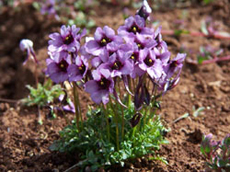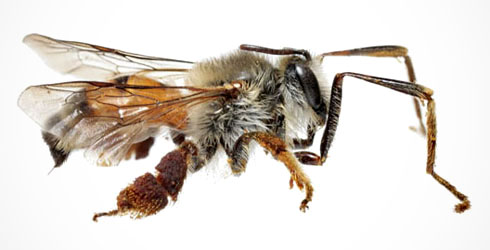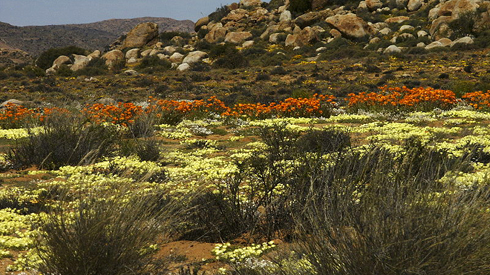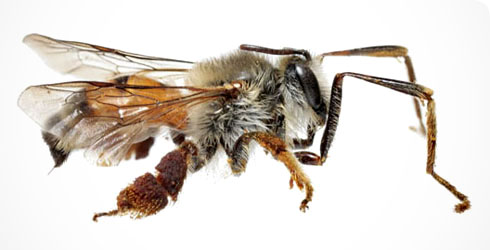Rediviva emdeorum (bee)
Rediviva emdeorum is a bee from western South Africa. The females have the longest known forelegs of any of the nearly 20,000 described bee species. This highly distinctive feature makes them easy to distinguish from other bee species.
Species detail

Rediviva emdeorum visits and pollinates a number of plant species of the genus Diascia that produce oil in the long paired spurs of their flowers.
Size
Body length: 10-12mm
Life expectancy
Adult bees live about 4-8 weeks.
Characteristic features and behaviour
The forelegs of Rediviva emdeorum are:
- longer than the entire bee
- used to collect floral oil produced in the long spurs of Diascia flowers
The oil is sucked up by very fine hairs that densely cover the legs. The bees mix this oil with pollen, using it instead of nectar to provision the nest cells for larval nourishment.
Rediviva bees are endemic to South Africa and have a close evolutionary relationship with their oil-producing host plants, data suggesting that as the spur length of flowers has increased, so has the length of the females' front legs.
-

Distribution and threats
Learn more about where Rediviva emdeorum is found and why climate change poses such a threat to this species.
-

References
Get reference information relating to Rediviva emdeorum.
Images

Female Rediviva emdeorum bees have very distinctive elongate legs. © Michael Kuhlmann

Flowering desert in the Goegap Nature Reserve in Namaqualand, South Africa © Winfried Bruenken / Wikipedia

Rediviva emdeorum visits and pollinates a number of plant species of the genus Diascia that produce oil in the long paired spurs of their flowers.
About the author

Dr Michael Kuhlmann
Entomologist researching Hymenoptera particularly bees and plant-pollinator systems.
